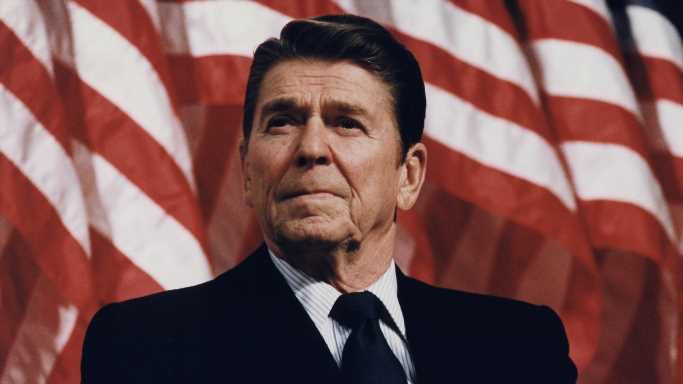The National Debt Under Every US President Since WW2
The U.S. national debt stands at a historic high of $31.5 trillion, surpassing the $31.4 trillion spending cap set by Congress. The unauthorized spending has prompted the Treasury Department to employ extraordinary measures to keep the federal government from defaulting and has set the stage for a debt-ceiling showdown in Washington.
If the debt-ceiling is not raised by summer, the federal government will not be able to meet its financial obligations – an unthinkable scenario that could result in global economic turmoil. Though raising the government’s borrowing limit is typically a routine procedure, House Republicans are exploiting the opportunity and have signaled an unwillingness to authorize more federal debt without budgetary concessions from the White House. (Here is a look at America’s most politically divided cities.)
The current debt crisis is not only the result of political brinkmanship, but also of decades of deficit spending across multiple administrations. In the last 22 years alone, the national debt has expanded by 445%, as the wars in Iraq and Afghanistan, the ongoing War on Terror, and the COVID-19 pandemic sent government spending soaring. At the same time, tax cuts and three economic recessions have reduced tax revenue, forcing the government to pay its bills with borrowed money.
With the threat of a debt-ceiling crisis looming large, 24/7 Wall St. reviewed how the national debt changed under each U.S. president in the last 100 years using data on total government debt (unadjusted for inflation) each year since 1923 from the U.S. Treasury Department. The 17 presidents – from Calvin Coolidge to Joe Biden – are listed in chronological order along with the national debt at the end of their first and last fiscal years in office.
The last time the federal government had a balanced budget – when revenue exceeded spending – was in 2000, under the Clinton Administration. That year, the national debt stood at $5.8 trillion, or about 55% of the U.S. gross domestic product at the time. As of the end of fiscal 2022, the national debt amounted to about 120% of current GDP.
The first U.S. president to increase the national debt by over a trillion dollars during his time in office was Ronald Reagan. During the Reagan Administration, the national debt expanded by 186%, the largest relative increase since Franklin Roosevelt, who raised government spending to fight World War II and bring the country out of the Great Depression. In dollar terms, the national debt increased the most under President Barack Obama and President Donald Trump, who oversaw increases of $8.3 trillion and $8.2 trillion, respectively, during their time in office. (Here is a look at each president’s path to the oval office.)
It is important to note that presidents have only limited control over the national debt while they are in office. Factors outside the control of the White House, including macroeconomic circumstances, geopolitical crises, global pandemics, and laws set by previous administrations all impact government spending and revenue.
Click here to see the national debt under every administration since WW2.
Click here to see our detailed methodology.
Sponsored: Find a Qualified Financial Advisor
Finding a qualified financial advisor doesn’t have to be hard. SmartAsset’s free tool matches you with up to 3 fiduciary financial advisors in your area in 5 minutes. Each advisor has been vetted by SmartAsset and is held to a fiduciary standard to act in your best interests. If you’re ready to be matched with local advisors that can help you achieve your financial goals, get started now.
Source: Read Full Article

